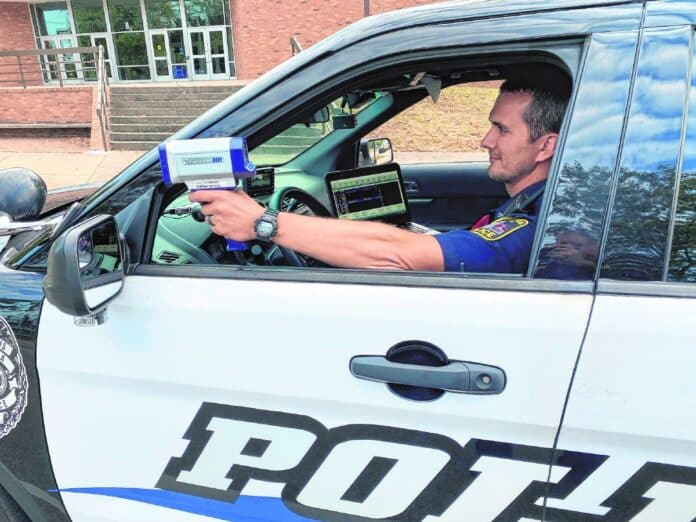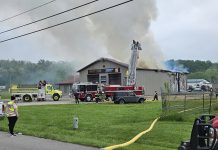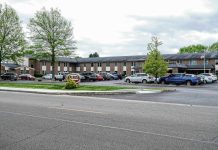
Local law enforcement officers have performed fewer traffic stops this year compared to last year due in large part to the pandemic, which resulted in fewer cars on the road earlier this year.
As of Sept. 15, Bartholomew County Sheriff’s deputies had done 3,850 traffic stops, compared to 6,614 as of Sept. 15, 2019 and 9,385 during all of 2019.
The Columbus Police Department had done 2,539 traffic stops as of Sept. 14, compared to 3,583 last year and 3,264 in 2018.
Overall, the two law enforcement agencies performed a combined 6,389 traffic stops during roughly the first 9.5 months this year, just under half the combined 12,968 traffic stops done last year.
[sc:text-divider text-divider-title=”Story continues below gallery” ]
“Our traffic stops as a whole are down, but I will directly relate that to COVID,” said Capt. Dave Steinkoenig, road division commander at the Bartholomew County Sheriff’s Department. “When COVID first came out, there was a time that based on all the things we were hearing from the (Centers for Disease Control and Prevention) and other places like that, contact or interaction was for emergency situations only. …A lot of our guys were reactive during that time instead of proactive. So they were out in the county responding to calls, looking for suspicious vehicles, stuff of that nature, but they weren’t really stopping a whole lot of cars and doing that self-initiated contact with the motoring public.”
As a result, there was “a big lull” in traffic stops in the county during the early part of the pandemic, especially during Gov. Eric Holcomb’s stay-at-home order when a lot fewer cars were on the road, Steinkoenig said.
“Particularly on your night shifts, there were days or times when a lot of the deputies that were out wouldn’t even see a car just because of the stay-at-home order,” Steinkoenig said.
In Columbus
The Columbus Police Department also reported a “drop in proactive traffic stops for minor violations” earlier this year, which spokesman Lt. Matt Harris largely attributed to fewer cars being on the road and the uncertainty at the onset of the pandemic.
“There was a large amount of uncertainty early on (in the pandemic), and there was a drop in proactive traffic stops for minor violations,” Harris said. “The officers use discretion on that and have and still do exercise care when dealing with the public.”
Additionally, CDP patrol officers have been conducting more detailed investigations when out on calls than they had been in the past, including getting statements and photographs, among other things, before referring cases to detectives, Harris said.
During the early phases of the pandemic, CPD saw an increase in certain types of calls, particularly domestic disturbances, domestic disputes, drug overdoses and alcohol-related calls, Harris said.
“With the increase in (certain) calls of service that we get, there are certain times of the day that we’re not able to focus on speeding vehicles as much as we would like to because if there are calls holding, those take priority,” Harris said.
Still a priority
Despite overall reduction in traffic stops, both law enforcement agencies say traffic enforcement — speeding, equipment violations, driving behavior and other violations — continues to be a high priority for officers and is an essential part of police work.
The decrease this year has reversed a recent trend of increasing traffic stops at both agencies.
The number of traffic stops by CPD patrol officers increased nearly 10% from 2017 to 2019, and CPD may still end 2020 close to last year’s total, though Harris said it is hard to say how things will shake out over the next three months.
Traffic stops by Bartholomew County sheriff’s deputies have increased 88% from 4,981 in 2015 to 9,385 last year, according to figures posted online by Bartholomew County Sheriff Matt Myers.
Even with the decline so far this year, the sheriff’s department is still on pace for more traffic stops than in 2015.
Additionally, traffic stops can often lead to arrests for other crimes, Harris said.
“There are a lot of arrests for a number of offenses that result from traffic stops, whether it be arrests on warrants, which is common. We see that all the time,” Harris said. “You just don’t know what a traffic stop is going to lead to. Sometimes it’s drugs. Sometimes it’s recovery of stolen property. …Sometimes it’s just as simple as writing someone a warning for their speed or not using their turn signal.”
Still monitoring
However, now that vehicle traffic has returned to about the same level as before the pandemic, local law enforcement say they are out monitoring the roads for traffic violations and performing traffic stops.
“Once everybody felt like the proper precautions were in place, we opened that back up and, you know, it’s time to get back out there,” Steinkoenig said. “We’ve got the proper PPE. It’s time to get back out there and do the self-initiated contacts more back to normal.”
Last week, Myers performed traffic stops on Goeller Boulevard after receiving numerous complaints about speeding vehicles in that area.
Myers issued four warnings and one ticket, Steinkoenig said.
“Speed remains one of the leading causes of collisions and speeding/traffic enforcement is one of the complaints that we most often receive,” Myers said on social media last week.
Both law enforcement agencies said they take complaints about speeding vehicles seriously and urge motorists to drive safely.
But officers can’t be everywhere at once.
“In a county with several hundred linear miles of roadway, with the number of deputies that we have out there in any given time, obviously we can’t be everywhere at once,” Steinkoenig said. “We try to divide those areas up the best we can.”




